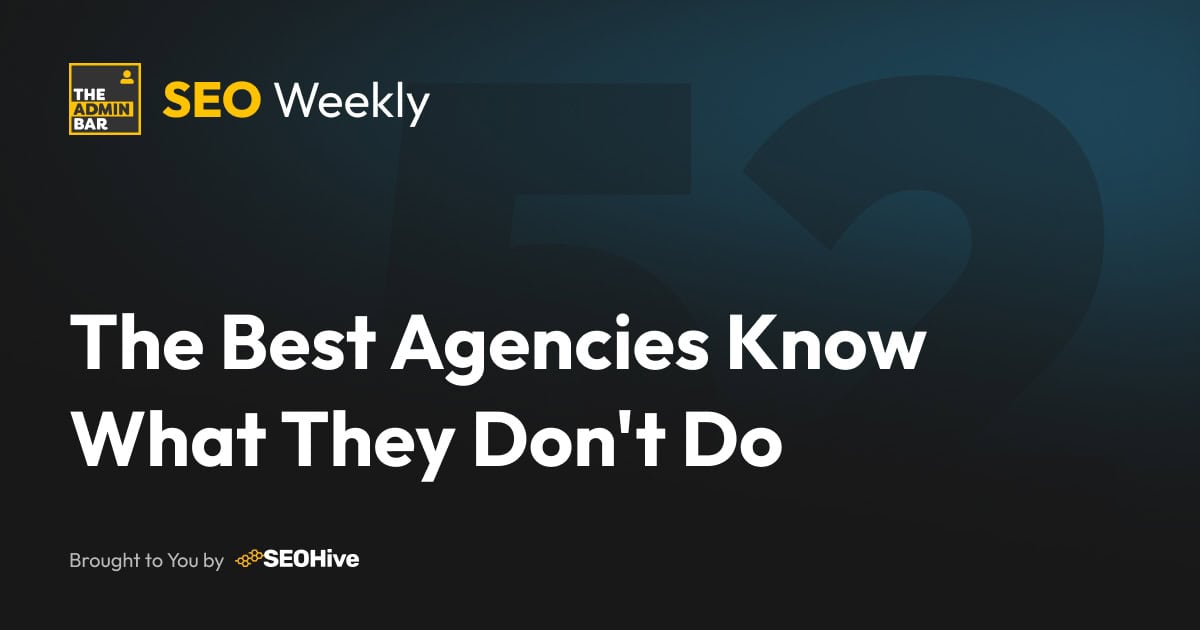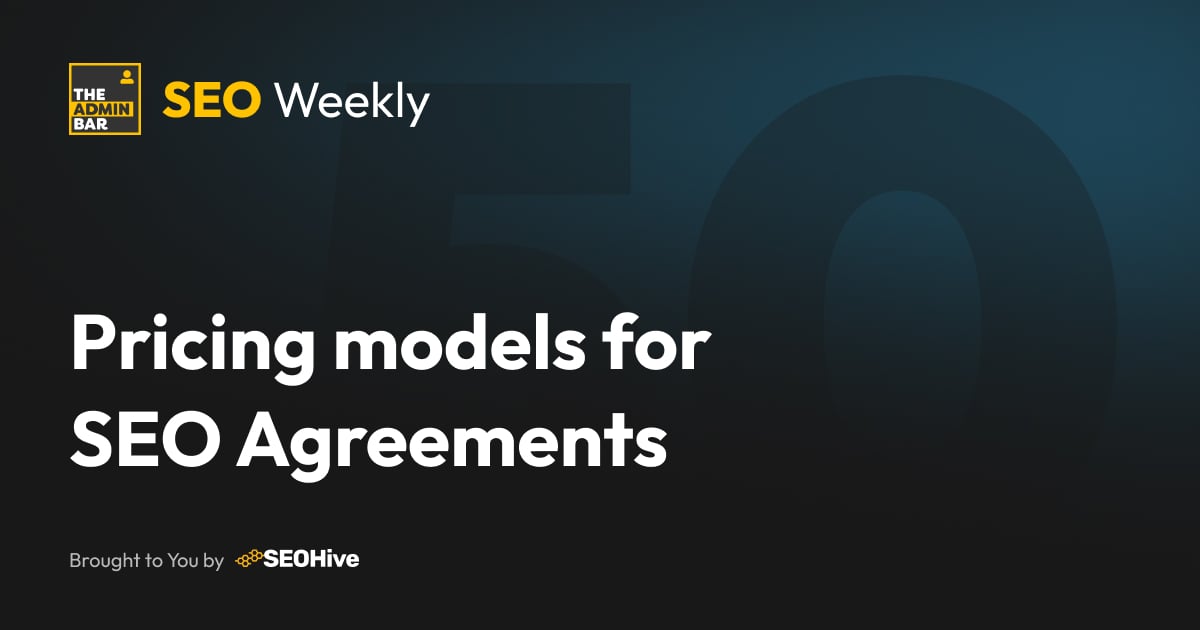Conversion Rate Optimisation (CRO) and SEO are normally considered different disciplines… However, if you’re running SEO for yourself or for your clients, they are intrinsically linked.
Let me put it this way…
You can drive as much traffic to your site as you like, but if no-one can convert (ie. buy / inquire), then all your SEO efforts are pointless.
Full transparency: I’m not a CRO specialist, but after years in SEO you learn very quickly that SEO and CRO need each other.
Why CRO Matters (and Where ROI Fits In)
If you’ve been following SEO Weekly this year, you’ll already know that site speed, indexability and tech health are non-negotiables. But here’s the fact of it: until someone inquires, buys, or subscribes, all the ranking and traffic is a vanity metric.
Conversion Rate Optimization (CRO) is all about making sure the people SEO brings to a site are actually able to take the next step – whether that’s filling a form, calling, booking or making a purchase.
This isn’t just anecdotal theory: SEO ROI is calculated by relating the revenue generated from organic traffic back to the investment. If “conversion” doesn’t happen, there is no return – full stop. The most valuable agencies (to their clients) don’t only measure search metrics, but true business outcomes.
In my course, Demystifying SEO, part of the first module is about an exercise with clients called “The Circle of Truth”. This is something I learnt from a business consultant around 15 years ago, and is designed to calculate exactly what growth would look like in a company, and if there would be any negative effects. SEO ROI fits into this beautifully.
The Core Ways CRO Drives SEO Results
1️⃣ Matching Search Intent
Every high-converting page begins with intent alignment: does the content on your landing page immediately address the question/problem that brought someone from Google? Use Google Search Console or SEO Stack to see the top queries driving clicks and ask “does this page live up to that promise?”
Practical tip: If most organic visitors bounce, check if the offer, content and CTA fit the phrase that actually brought them in.
2️⃣ Craft Content that Nudges AND Informs
SEO opens the door; value-driven content is what keeps people in the room and moves them toward action.
- Use benefit-led copy, clear CTAs, relevant testimonials and answer objections up front.
- Address the full user journey, not just the click.
I’m no copywriter either (honestly, I can do some stuff!), but thankfully I’m married to one 😂 – whilst I wouldn’t recommend relationship advice, getting some help in this area can be invaluable if you don’t know what you’re doing… And no, ChatGPT isn’t good enough here.
Pro tip: Have someone new read the page and name the next action they’d expect to take. If it’s not obvious, edit for clarity.
3️⃣ Reduce Friction
Can users find the CTA, fill out forms in seconds and act without confusion or distraction? Cut unnecessary steps, keep forms short and always show trust-building cues (like reviews or guarantees) near your CTAs.
- Mini audit: Try to fill in a form or checkout on mobile – where does it get annoying or unclear? That’s your first CRO fix.
4️⃣ Monitor and Learn from Real User Behavior
Don’t guess – watch what real users do. Use a tool like Hotjar, Mouseflow or Microsoft Clarity so you’re not guessing.
- Heatmaps show you where people click, scroll or drop off.
- Session recordings reveal exactly where users get lost or stuck.
Regularly watch a sample of user sessions. You’ll get insights no KPI dashboard can offer, and usually spot “quick win” issues fast.
5️⃣ Test and Iterate
Set a conversion baseline (using Google Analytics or your CRM), and make focused changes one at a time:
- Move/reword buttons.
- Tweak headlines for clarity.
- Try different social proof placement.
After every change, compare before/after conversion rates. This process – not major overhauls or guesswork – drives real uplifts.
Pro tip: If you have access, use a tool like Adam Lacey’s Splithero to test changes so you know you’re making a difference.
If Conversions are Low, Do This First:
I get it, most people only consider this stuff when they have a fire to put out… If this is you, try this process right away:
- Run a heatmap/recording tool for a week.
- Look for rage clicks, form abandons, confusion or “dead spots.”
- Check intent matching on landing pages that get lots of traffic but few conversions.
- Simplify CTAs and Forms.
- Remove one field (or step) and see what happens.
- Segment by channel.
- If SEO traffic converts worse than paid, re-examine what keywords those visitors arrive on and what the page offers them.
- Ask real people.
- One user test will often reveal more than months of watching stats.
Finding Real Marketing ROI
For companies that are serious, ranking higher isn’t the win. Real results come from optimizing the journey from the search result to meaningful action. As such most of the above is embedded in their SOPs and not just used as remedial action when a client causes a stir…
For every organic campaign, ask:
- Who actually took action?
- How can we make the next step easier, clearer or more compelling?
Combine honest intent tracking, real user feedback and content that gently pushes users toward action. That’s how your SEO efforts finally move the needle for you and your clients.
TAB question:
What’s one CRO tweak you made that changed your SEO results? Drop your best tip or war story below… 👇
Join the Conversation!
There's a dedicated thread on this post inside of The Admin Bar community. Join in on the conversation, ask questions, and learn more!
Group Thread





